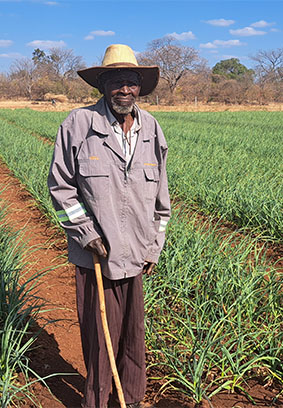-
No. 15 Coventry Street
Geodesy Building Harare -
Send an Email info@sacp.co.zw
-
Helpline & Support +263 711 492 458
SACP Project Management
EnquiriesTargeting & Mainstreaming
- SACP - Smallholder Agriculture Cluster Project
- Targeting & Mainstreaming

Need Help! Get in touch quickly
Targeting and Mainstreaming
SACP is implementing an inclusive targeting strategy to ensure the project benefits a large number of poor smallholder farmers. The main benefit flow is being derived through the mobilisation of 800 APGs from the targeted communities. Around 24,000 low-income smallholder households will be members of these APGs and receive capacity-building and financial support from the project to further develop their livelihoods.
The SACP intervention is projected to cover approximately 78,240 beneficiary households, corresponding to 391,200 household members; one beneficiary represents five persons, which is the average size of a household in Zimbabwe. Furthermore, the SACP indirect target group is estimated to be 45,000 households, which, in particular, includes those villagers who live in the direct vicinity of supported agribusinesses and rural road construction sites but are not immediately part of the SACP value chain development systems.
SACP’s primary target group in all project activities, including matching grants to APGs, will include a minimum of 50 percent women and 30 percent youth (aged 15 to 35 years).
Special aspects relating to IFAD’s corporate mainstreaming priorities
Gender.
While Zimbabwe has, in recent years, progressed in terms of gender equality, it still lags behind, particularly in terms of women’s economic empowerment and financial inclusion. Approximately 80 per cent of women in Zimbabwe live in communal areas, where they constitute 61 per cent of subsistence farmers and provide 70 per cent of labour. Female-headed households are generally categorised as poor and they constitute 35 per cent of households in rural areas.
Women face a number of constraints along the agricultural value chains, including:
⦁ in production, low-paid employment, limited assets and security of tenure resulting from discriminatory customary laws, and large share of women in agricultural labour
(ii) in marketing, lack of facilities, limited agricultural information, unfair prices and unsafe transportation,
(iv) limited participation in decision-making processes both at household and community level
(v) increased vulnerability to climate change impacts due to underlying power relations, structures, and gender inequalities. Rural women, who are already in a disadvantageous position, will also have a lower climate change (CC) adaptive capacity.
SACP will tackle the above gender-based constraints using the Gender Action Learning System (GALS) approach as an entry point to achieve gender transformation.
Youth
Zimbabwe is experiencing a youth bulge with young women and men, aged 15 to 34 years, constituting 35.7 per cent of the population. This potential demographic dividend is yet to be fully harnessed. Youth will form at least 30% of the membership of APGs, while relevant youth-led enterprises are expected to benefit under the project.
Nutrition
Malnutrition remains a pervasive challenge, with 1 in 3 children being either stunted or suffering from chronic malnutrition. Children living in rural areas are more likely to be stunted and underweight than those in urban areas due to a combination of factors, which include reduced food availability due to poor agricultural performance, lower access to nutritious food due to high levels of poverty, and poor food material utilisation due to a lack of knowledge on how to use the available food. The program will promote the consumption of four-star diets for smallholder farmers, particularly children below the age of five and women of childbearing age. Communities will be trained on the cultivation and preparation of nutritious food.
Climate Change
Rainfall variability is a key climate parameter in Zimbabwe, with associated risks of droughts and intermittent floods negatively impacting livelihoods and economic development. The vulnerability of the agricultural sector is accentuated by the reliance on rain-fed farming of at least 80 per cent of the rural populations. Climate Change adaptation in the agriculture sector is one of the priorities elaborated in Zimbabwe’s Nationally Determined Contributions, which also recognises the mitigation co-benefits from climate smart agriculture and sustainable agro-forestry management practices. The program will roll out climate-smart initiatives for farmers who cultivate crops in the irrigation schemes and adjacent rain-fed areas, as well as farmers that will participate in the livestock value chains.
